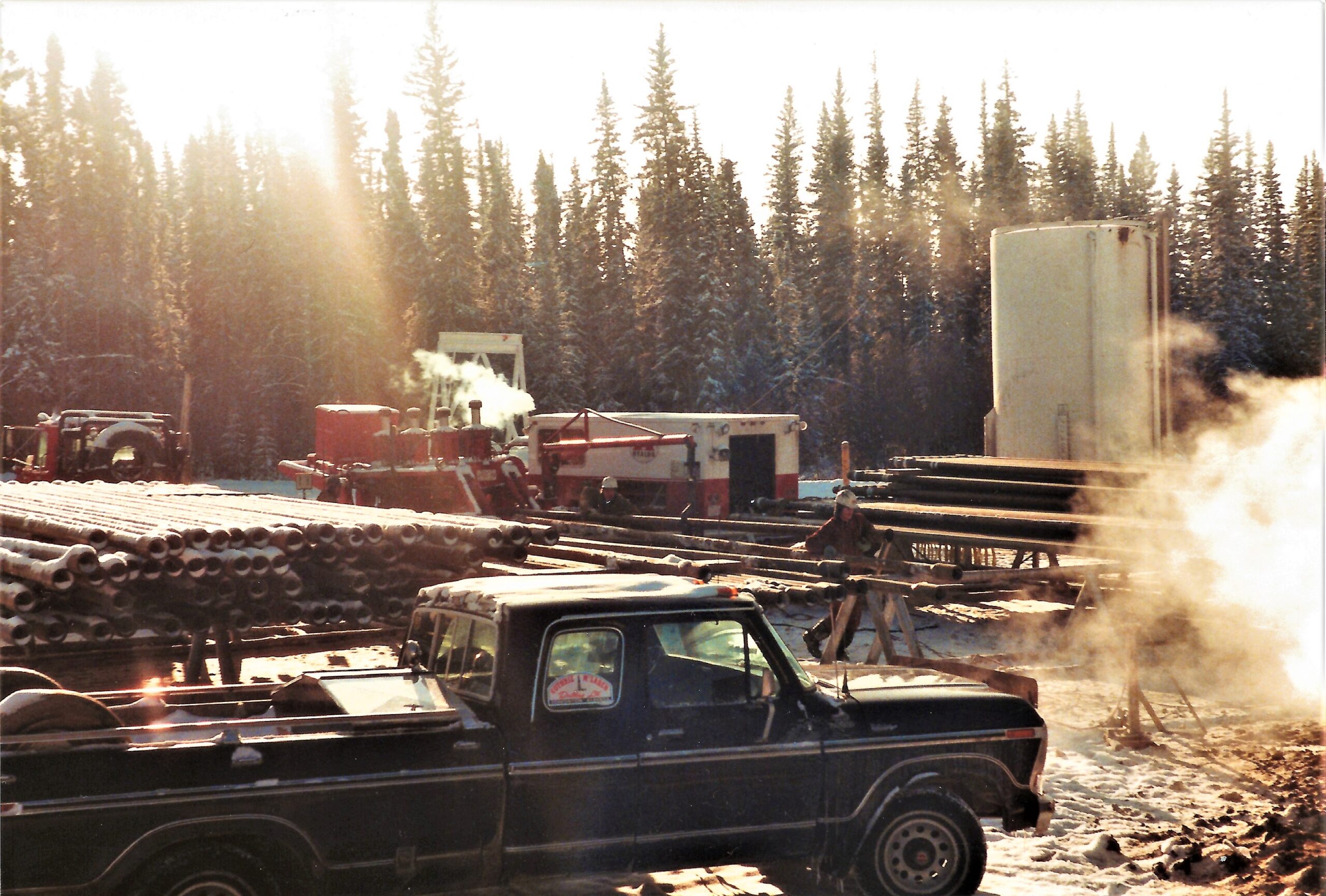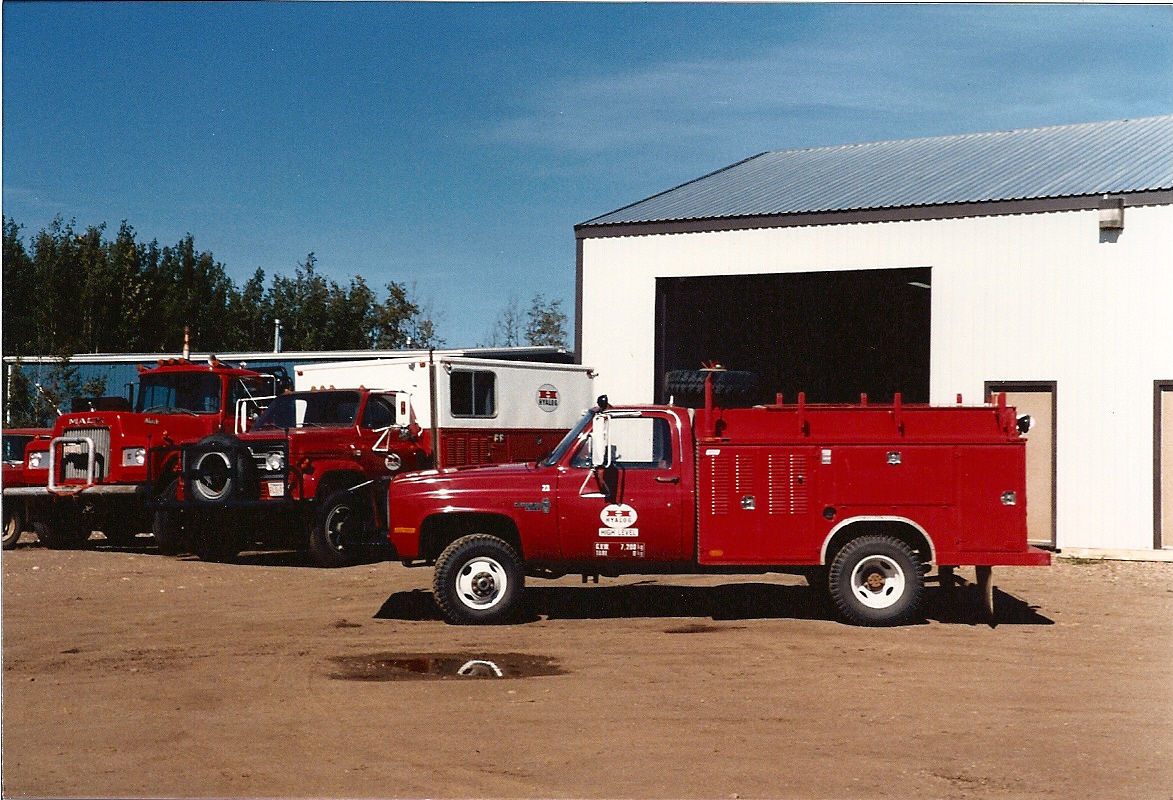I started my career in the oilfield tubular inspection business when I was 15 and I worked summer holidays and weekends for Hyalog Oilfield Services cleaning up around the lathes and buffing tooljoints for the hardbanders. At 17 in 1976 I started full time after graduating high school. I quickly rose to the position of drill pipe inspection operator and worked inspecting drill pipe all around Alberta and northern B.C. for drilling contractors like Westburne, Challenger, Peter Bawden, Kenting, Hi-Tower, Brinkerhoff, Cantex, Tri-city and many others. I also inspected my fare share of rental pipe for companies like OPI, Key, BDR, Lorys and Decarson.


In 1982 I transferred to High Level, Alberta to operate a satellite station for Hyalog. I was responsible for all operations in High Level for Hyalog including Drill collar and Drill pipe inspections, refacing and straightening. I only brought crews up from Edmonton when I had more work than I could handle.

In 1993 after Hyalog was sold to Shaw Industries I started B.H.A. Inspection Services Ltd. and focused on inspecting bottom hole assemblies which included Drill collars, Hevi-wate Drill pipe and related subs. I continued operating out of High Level until 2000 when I moved to Edson, Alberta where I continue to operate from today.
The years I spent in High Level gave me a great deal of experience that I don’t think any other inspection operator has today. I worked primarily in the Rainbow Lake, Zama, Chinchaga, North Helmet, and Red Earth fields and these areas where notorious for drilling tool failures. Through the 1980s and 90s northern Alberta and British Columbia were extremely busy and it would be normal to work four to five hundred hours a month in the winter. One of the reasons Hyalog set up in High Level was at the request of NL McCullough and Homco the two fishing tool companies in High Level to inspect their tools because they couldn’t turn them around fast enough out of Grande Prairie, the closest source for all drilling and service tools. Although the majority of the wells drilled were only 1,500 to 1,800m deep there were a lot of down hole issues like lost circulation, hole deviation, and H2S. That combined with high rotary speeds, drilling in compression, under torqued connections, poorly balanced bottom hole assemblies and outdated inspection methods made for a lot of tool failures. Bottom hole assemblies would be inspected after every hole and after rough surface holes or tool failures. I conducted hundreds of trip inspections on the rig floor in the 18 years I spent in High Level. This means as the bottom hole assembly was tripped in or out of the hole I would inspect the drilling tools in the order they were ran in giving me a good overview of any problems they were having. I would also watch the crew make and break connections and pay attention to makeup and breakout torques. Connections that broke out at a higher torque than they were made up to usually meant they were under torqued at there initial makeup and then would over torque down hole once high downhole torques were encountered. Under torqued connections would also wobble before they torqued up down hole causing metal fatigue and cracking. Another cause of connection failures was mismatched pin and box O.D.s. There were several rigs that I did work for on a regular basis and I would tell them what order to run their drill collars in to balance the pin and box connections and that’s all it took to lower their crack reject rate substantially. In those days bending stress ratios were very important and in a lot of cases not followed. I can say the rigs I inspected tools for on a regular basis had very few bottom hole assembly issues and low reject rates.
Another aspect of operating in the High Level area was its location in the northwest corner of Alberta and the closest location for replacement tools was Grande Prairie (450km away) but more likely Edmonton (740km away) and I was always encouraged to leave the customer with something to drill with because they didn’t want to have to circulate waiting on replacement tools. I would achieve this by completing minor thread and seal repairs and in some cases grinding out and stress relieving minor hairline cracks.
The procedures that I follow today were developed from the years I spent in High Level and have proven themselves for many years.